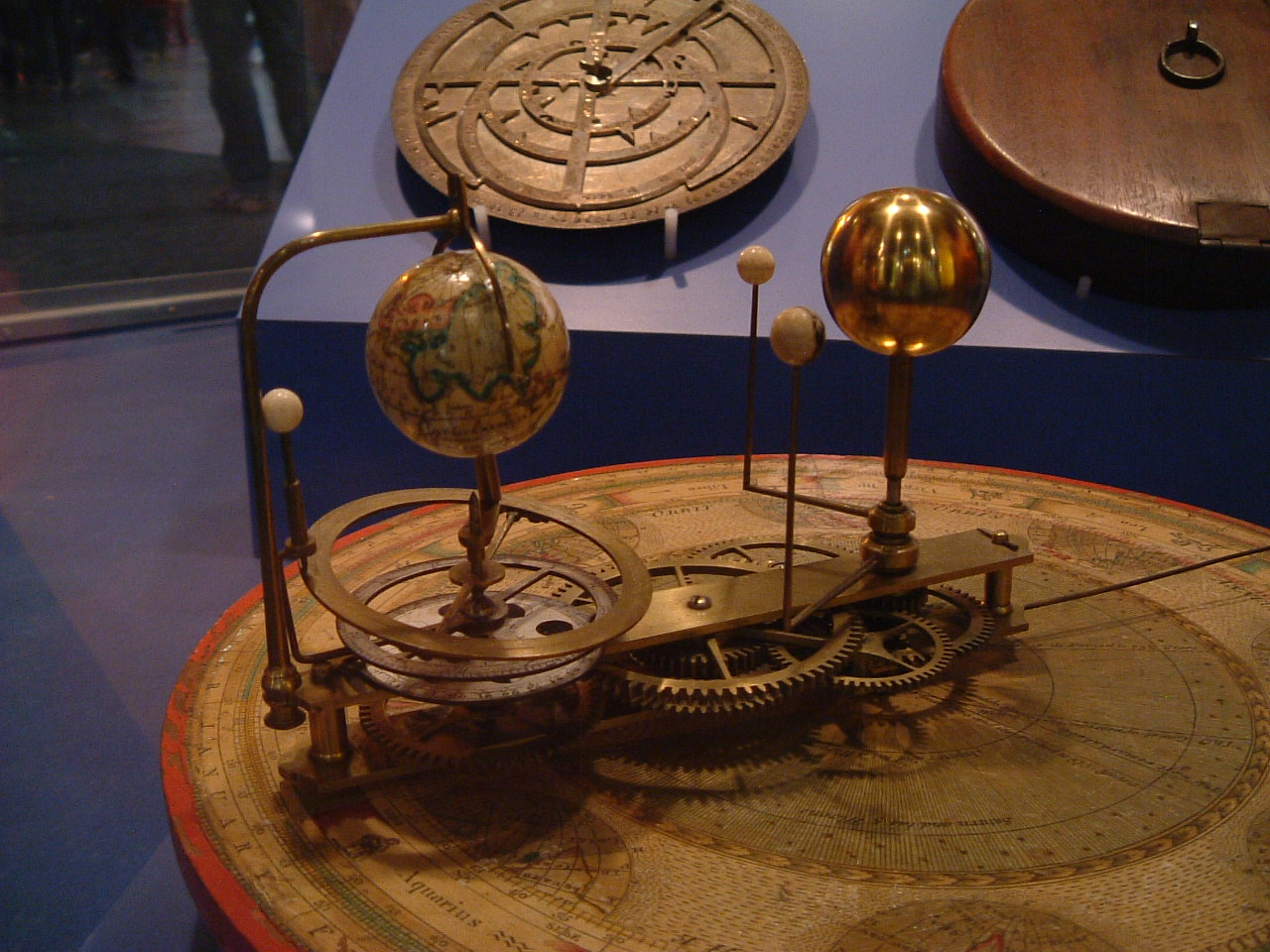|
Eidouranion
An eidouranion is a kind of orrery that combined mechanical movement with a method of back projection. Its invention is attributed to Adam Walker (1731-1821) who in the 1780s built one measuring 27 feet in diameter. He used it to accompany his lectures on astronomy. It is an ancestor of planetarium A planetarium ( planetariums or ''planetaria'') is a theatre built primarily for presenting educational and entertaining shows about astronomy and the night sky, or for training in celestial navigation. A dominant feature of most planetarium ... projectors. It is known that Adam Walker held lectures featuring the Eidouranium at the Royal Theatre in London in the 1780s and the London Lyceum. The shows were continued by his eldest son, William Walker (1767-1816), from around 1812. The shows were continued through the 1820’s by William’s younger brother Deane Franklin Walker (1778-1865). The word "eidouranion" derives from the Greek compound "eid + ouranos". The combining ele ... [...More Info...] [...Related Items...] OR: [Wikipedia] [Google] [Baidu] |
Adam Walker (inventor)
Adam Walker (1730/31 – 11 February 1821) was an English writer and inventor. He gave lectures on astronomy, aided by one of his inventions, the eidouranion. Life Walker was born in Patterdale in Westmorland, the son of a woollen manufacturer. He left school almost before he could read, but continued to study on his own. He borrowed books, and occupied his leisure in constructing models of neighbouring corn mills, paper mills and fulling mills. His reputation as a student at the age of fifteen procured him the post of usher at Ledsham school in the West Riding of Yorkshire. Three years later he was appointed writing-master and accountant at the Free School in Macclesfield, where he studied mathematics and produced his first publication, ''A System of Family Bookkeeping, with a Ready Ruled Book'' (1758). He also made some ventures in trade which were unsuccessful, and lectured on astronomy in Manchester. The success of his lectures encouraged him, after four years at Macclesfield ... [...More Info...] [...Related Items...] OR: [Wikipedia] [Google] [Baidu] |
Orrery
An orrery is a mechanical model of the Solar System that illustrates or predicts the relative positions and motions of the planets and moons, usually according to the heliocentric model. It may also represent the relative sizes of these bodies; however, since accurate scaling is often not practical due to the actual large ratio differences, a subdued approximation may be used instead. Though the Greeks had working planetaria, the first orrery that was a planetarium of the modern era was produced in 1704, and one was presented to Charles Boyle, 4th Earl of Orrery – hence the name. They are typically driven by a clockwork mechanism with a globe representing the Sun at the centre, and with a planet at the end of each of the arms. History Ancient versions The Antikythera mechanism, discovered in 1901 in a wreck off the Greek island of Antikythera in the Mediterranean Sea, (it now resides in the National Archaeological Museum of Athens) and extensively studied, exhibited the diu ... [...More Info...] [...Related Items...] OR: [Wikipedia] [Google] [Baidu] |
Planetarium
A planetarium ( planetariums or ''planetaria'') is a theatre built primarily for presenting educational and entertaining shows about astronomy and the night sky, or for training in celestial navigation. A dominant feature of most planetariums is the large dome-shaped projection screen onto which scenes of stars, planets, and other celestial objects can be made to appear and move realistically to simulate their motion. The projection can be created in various ways, such as a star ball, slide projector, video, fulldome projector systems, and lasers. Typical systems can be set to simulate the sky at any point in time, past or present, and often to depict the night sky as it would appear from any point of latitude on Earth. Planetaria range in size from the 37 meter dome in St. Petersburg, Russia (called “Planetarium No 1”) to three-meter inflatable portable domes where attendees sit on the floor. The largest planetarium in the Western Hemisphere is the Jennifer Chalsty Plan ... [...More Info...] [...Related Items...] OR: [Wikipedia] [Google] [Baidu] |
Adam Walker At English Opera House Exhibiting Eidouranion 21 March 1817
Adam; el, Ἀδάμ, Adám; la, Adam is the name given in Genesis 1-5 to the first human. Beyond its use as the name of the first man, ''adam'' is also used in the Bible as a pronoun, individually as "a human" and in a collective sense as "mankind". tells of God's creation of the world and its creatures, including ''adam'', meaning humankind; in God forms "Adam", this time meaning a single male human, out of "the dust of the ground", places him in the Garden of Eden, and forms a woman, Eve, as his helpmate; in Adam and Eve eat the fruit of the tree of knowledge and God condemns Adam to labour on the earth for his food and to return to it on his death; deals with the birth of Adam's sons, and lists his descendants from Seth to Noah. The Genesis creation myth was adopted by both Christianity and Islam, and the name of Adam accordingly appears in the Christian scriptures and in the Quran. He also features in subsequent folkloric and mystical elaborations in later Judaism, ... [...More Info...] [...Related Items...] OR: [Wikipedia] [Google] [Baidu] |




